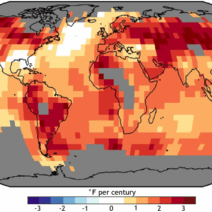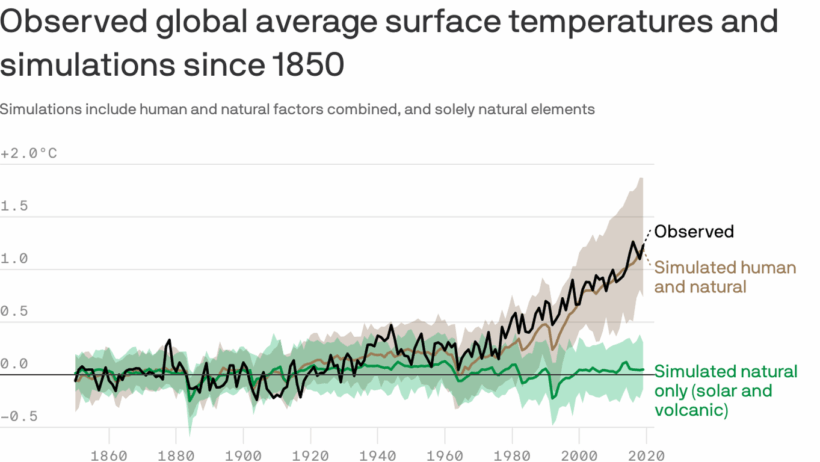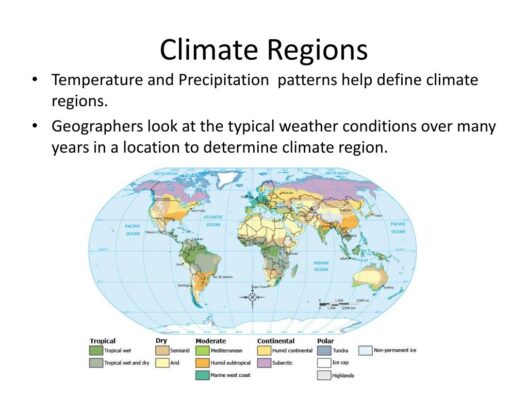As we examine the pressing issue of global warming, a pivotal question emerges: is humanity the main cause of this climatic upheaval? The response lies within an intricate web of scientific observations, modeling, and empirical evidence. The central tenets of climate science consistently point towards human activities as the primary catalyst for the substantial increases in global temperatures, yet a deeper dive into environmental phenomena reveals a more nuanced narrative.
Let us first contextualize global warming. The Earth’s climate operates like a finely tuned machine, influenced by a myriad of natural processes, including volcanic eruptions, solar radiation fluctuations, and greenhouse gas emissions. However, since the late 19th century, there has been an alarming increase in the average global temperature, with projections indicating that it may rise by an additional 1.5° to 2°C above pre-industrial levels by the end of this century. Empirical data visualized through stunning graphical representations illustrate this alarming trend vividly.
Human activities—particularly the combustion of fossil fuels, deforestation, and industrial processes—have led to an unprecedented surge in greenhouse gas emissions. Carbon dioxide (CO2), methane (CH4), and nitrous oxide (N2O) are chief contributors to this phenomenon. Carbon dioxide levels have surged from about 280 parts per million before the Industrial Revolution to over 410 parts per million today. This meteoric rise correlates strikingly with the onset of industrial activities and the burning of fossil fuels, leading scientists to assert that humanity bears significant responsibility for global warming.
The scientific discourse surrounding the attribution of global warming to anthropogenic factors utilizes models, observational data, and climate projections. One notable study employed climate models to simulate temperatures under two scenarios: one with human influence and one devoid of it. The results were unequivocal; the models that included human activity aligned seamlessly with observed data, while those excluding human influence produced temperatures that varied considerably from what we experience today. This reinforces the assertion that human activities are not just contributors but are, indeed, the central architects of contemporary climate change.
Yet, a playful question arises: is it possible that other factors, perhaps even cosmic ones, play a more significant role? Well, let’s probe deeper into the potential contributions from natural sources. Volcanic eruptions, for instance, can inject massive amounts of ash and gases into the atmosphere, temporarily cooling the planet. However, the frequency and scale of significant eruptions in recent history do not match the sustained increase in temperature associated with anthropogenic emissions. Furthermore, solar cycle variations do influence climate patterns; however, the science reveals that these fluctuations cannot account for the drastic changes we’ve witnessed recently.
To truly grasp the gravity of our impact, one must consider the consequences of inaction. Rising temperatures lead to melting glaciers, rising sea levels, and catastrophic weather events. The carbon cycle is fundamentally altered, precipitating ocean acidification and resultant harm to marine ecosystems. The ramifications extend beyond environmental degradation; they threaten food security, health, and even geopolitical stability. The complexity of climate systems intertwines various factors, yet human activity stands as the unmistakable common denominator in these developments.
There exists a trove of evidence showcasing the human footprint on the environment. Deforestation, particularly for agricultural expansion, has not only reduced carbon sequestration capabilities but also disrupted local climates. The destruction of forests contributes to the release of stored carbon, further exacerbating the greenhouse effect. Meanwhile, industrialization demands water and energy, catalyzing a vicious cycle that leads to pollution and habitat destruction. The question provokes us: can our ingenuity and capacity for innovation counterbalance the damage? The answer lies in proactive measures, including sustainable practices and renewable energy adoption.
Transitioning to a sustainable future is not just an ethical imperative but an economic opportunity. Embracing renewable energy sources such as solar, wind, and hydroelectric power can yield an impressive reduction in greenhouse gas emissions. Investments in green technology offer a dual benefit: mitigating climate change while fostering economic growth. The potential for job creation in renewable energy sectors is immense, ensuring that sustainability and economic vitality can coexist harmoniously.
Education also plays a vital role in combatting ignorance regarding the science of climate change. A scientifically literate populace equipped with knowledge about the impact of human activities is more likely to advocate for policies that prioritize sustainability. Engaging in informed dialogue about climate science fosters a sense of collective responsibility and galvanizes efforts to address this existential threat.
In conclusion, while it is tempting to ponder the likelihood of other influences on global warming, the preponderance of evidence solidly points to humanity as the primary instigator. Our activities have reshaped the Earth’s climate in a manner unparalleled in geological history. This challenge presents an opportunity—not merely to critique but to enact change, innovate, and embrace sustainable practices that pave the way for a more favorable climate future. The science unequivocally speaks, and it is imperative that we heed its call.








